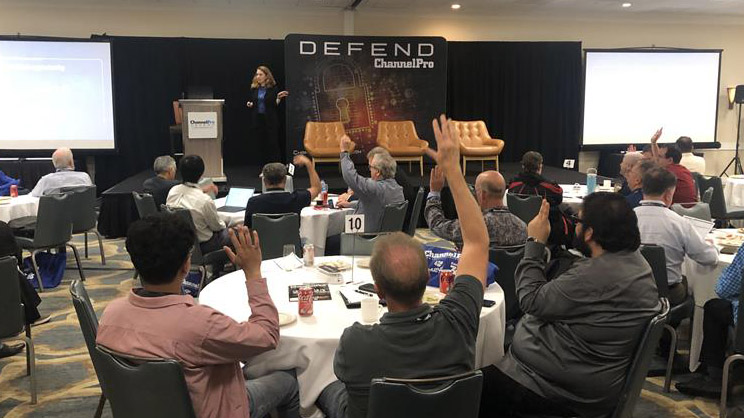As MSPs grow, delivering consistent, high-quality support becomes a core challenge. A foundational decision in service delivery is whether to build a centralized help desk or use a decentralized technician model, where techs are assigned to specific clients. Both models offer unique advantages and trade-offs. This guide will help you evaluate which best suits your team size, client base, and service goals.
Approach 1: Centralized Help Desk
A centralized help desk routes all incoming tickets to a shared queue managed by a team of technicians. No technician is assigned exclusively to a specific client. Instead, support is pooled, and issues are addressed based on urgency, availability, and specialization.
Advantages
- Efficient Ticket Routing and Resolution: With a shared help desk, tickets can be triaged and routed to the most appropriate technician based on skill level, priority, or availability. This minimizes delays and ensures the right expertise is applied, improving resolution times and client satisfaction.
- Simply Scale Support Operations: Centralized systems make it easier to onboard new technicians, maintain consistent processes, and handle surges in support volume. If a technician is out sick or on vacation, others can step in without disrupting client service.
- Consistent Documentation and SLA Management: A centralized team typically operates with standardized documentation, ticketing workflows, and communication practices. This helps MSPs better meet SLAs, track KPIs, and conduct audits or quality reviews across all clients.
Challenges
- Less Personal Client Experience: Clients may not speak to the same technician every time they call or submit a ticket. This can create frustration for users who prefer a familiar point of contact, especially for recurring or complex issues.
- Heavier Emphasis on Process and Tooling: For a centralized model to work smoothly, you need strong systems in place, such as PSA tools, knowledge bases, documentation protocols, and escalation paths. Without well-structured operations, efficiency suffers and issues can fall through the cracks.
- Risk of Overstandardization: While consistency is valuable, a rigid help desk process may miss the nuances of specific client environments. If support is too generic, it may not account for business-specific workflows or application usage.
Approach 2: Decentralized Technician Model
In this model, technicians are assigned to specific clients — essentially acting as a dedicated IT resource. The technician becomes intimately familiar with the client’s systems, staff, and business goals. Tickets and requests are routed directly to that technician or small team.
Advantages
- Highly Personalized Service: Clients often prefer dealing with the same technician who knows their environment. Familiarity builds trust and can improve communication, especially for nontechnical stakeholders who appreciate a known contact.
- Deeper Understanding of Client Systems and Culture: Assigned techs become more efficient over time because they learn each client’s infrastructure, quirks, and user behaviors. This leads to faster resolutions, better system recommendations, and proactive support.
- Stronger Client Retention Through Relationships: A dedicated tech often becomes an extension of the client’s team. This emotional loyalty can increase satisfaction and retention, even in competitive markets. Clients are less likely to switch MSPs when they feel they’d be losing “their IT person.”
Challenges
- Harder to Scale and Manage Resources: If a dedicated technician is unavailable, coverage becomes tricky. You may need backup techs trained for each client, which creates staffing inefficiencies. As your client base grows, this model can become unwieldy without careful planning.
- Inconsistent Documentation and Practices: Techs working independently may develop their own ways of doing things. This can lead to inconsistent ticket notes, uneven quality of service, and difficulty tracking performance across the board.
- Higher Staffing Costs and Utilization Issues: Having techs tied to specific clients can result in underutilization. Some clients may not need full-time support, while others may overload their assigned tech. Without centralized load balancing, it’s harder to optimize technician time.
Key Decision Factors
- Client Expectations and Culture: If your clients value personal service and long-term relationships, a decentralized model may be a better fit. Clients in industries like legal or healthcare may prioritize familiarity and trust over efficiency. Conversely, clients accustomed to corporate IT support expect a structured help desk with escalation tiers.
- MSP Size and Stage: Smaller MSPs often operate with a decentralized model because of limited staff. As you grow, shifting to a centralized help desk can support scale and consistency. It’s common for MSPs to evolve from one model to the other as they mature.
- Ticket Volume and Complexity: If you deal with high ticket volume or many low-complexity issues, a centralized help desk helps ensure fast triage and resolution. If your clients have fewer tickets but higher complexity (e.g., custom applications, legacy systems), dedicated techs typically are more effective.
- Service-level Agreement (SLA) Commitments: Centralized models make it easier to meet response and resolution time SLAs, as ticket distribution is more flexible. Dedicated techs may struggle to meet SLAs consistently if they’re overloaded or unavailable, unless you have a structured backup plan.
- Tool Stack Maturity: A centralized help desk demands strong PSA/RMM integration, solid documentation practices, and ticket routing workflows. If your tools are basic or inconsistent, a decentralized model will deliver better results until your systems mature.
Staffing and Training Considerations
- Centralized Help Desk: This model allows you to develop techs with broad skill sets who can jump into any ticket queue. It’s easier to train new hires using standardized procedures, and shift leaders or dispatchers can manage workloads in real time. Regular coaching, SLA training, and peer reviews help drive consistency.
- Decentralized Model: This requires technicians who are self-directed and good at building relationships. These techs should have strong soft skills and the ability to operate autonomously. You may need to invest more in cross-training and shadowing programs so backup techs can step in when the primary tech is unavailable.
Implementation Tips
- Centralized Help Desks: Invest in knowledge bases, standardized ticketing workflows, and PSA automation. Design a clear escalation path and ensure tiered support roles are defined. Use dashboards and metrics to monitor performance and client satisfaction.
- Decentralized Models: Create internal documentation for each client so other techs can assist if needed. Establish protocols for vacation coverage and handoffs. Schedule regular account reviews to ensure techs are aligned with client goals and standards.
- Hybrid Model Option: Many MSPs use a hybrid approach — tier 1 support is centralized, but each client has a designated technician or account manager for escalations and strategic needs. This can provide scalability while preserving a personal touch.
Conclusion
There’s no one-size-fits-all answer. Your help desk model should align with your growth goals, toolset, client expectations, and staffing capabilities. Centralized models offer scale and efficiency, while decentralized approaches build trust and retention. Many successful MSPs evolve from decentralized beginnings to a centralized or hybrid model as they grow. This ensures that their help desk is both scalable and personal.
Next Steps
- Want more helpful guidance on selling security services? Check out our Running a Profitable MSP Answer Center
- Have a question for our experts? Send it to editors@channelpronetwork.com
ChannelPro has created this resource to help busy MSPs streamline their decision-making process. This resource offers a starting point for evaluating key business choices, saving time and providing clarity. While this resource is designed to guide you through important considerations, we encourage you to seek more references and professional advice to ensure fully informed decisions.
Image: iStock













